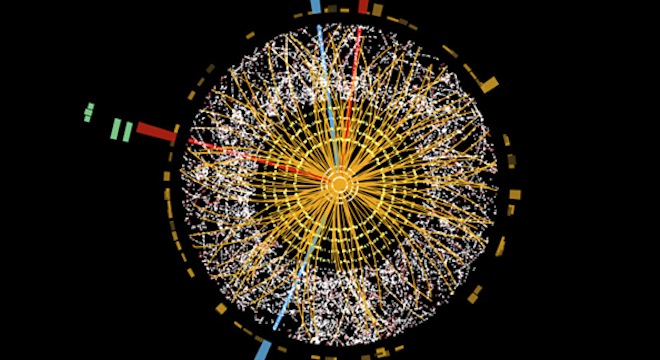By FRANK JORDANS and JOHN HEILPRIN
GENEVA (AP) — Scientists working at the world’s biggest atom smasher near Geneva have announced they are confident that the new subatomic particle discovered last summer is a version of the long-sought Higgs boson. The particle bears key attributes of the so-called “God particle” that was theorized nearly a half-century ago as fundamental to the creation of the universe. It took thousands of scientists from around the world to hunt the particle in the atom-smasher operated by CERN, the European Organization for Nuclear Research.
WHAT EXACTLY IS THE GOD PARTICLE?
Everything is made of atoms, inside of which are electrons, protons and neutrons. And those, in turn, are made of quarks and other subatomic particles. Scientists have wondered how these tiny building blocks of the universe acquire mass. Without mass, the particles wouldn’t hold together — and there would be no matter.
One theory proposed by British physicist Peter Higgs and teams in Belgium and the United States nearly a half-century ago is that a new particle must be creating a “sticky” energy field that acts as a drag on other particles. The atom-smashing experiments have now confirmed that this particle exists in a form that is similar to — but perhaps not exactly like — what was proposed.
WHY DOES THIS MATTER?
The Higgs is part of many theoretical equations underpinning scientists’ understanding of how the world came into being. If the particle didn’t exist, then those theories would have needed to be fundamentally overhauled. The fact that it does exist, in some form, means scientists have been on the right track with their theories. So far the measurements seem to line up with was expected under the so-called Standard Model of particle physics. This is disappointing for scientists who were hoping to see new discoveries including a theory known as “super-symmetry” where particles don’t just come in pairs — think matter and anti-matter — but quadruplets, all with slightly different characteristics.
HOW MUCH DID IT COST?
CERN’s atom smasher, the Large Hadron Collider, which forms a 17-mile (27-kilometer) tunnel beneath the Swiss-French border, cost some $10 billion to build and run. This includes the salaries of thousands of scientists and support staff around the world who collaborated on the two experiments that independently pursued the Higgs.
WHAT IF ANY PRACTICAL RESULTS MIGHT COME FROM THE SEARCH?
None directly. But the massive scientific effort that led up to the discovery paid off in other ways, including the creation of the World Wide Web. CERN scientists developed it to make it easier to exchange information among each other. The vast computing power needed to crunch all of the data produced by the atom smasher also boosted the development of distributed — or cloud — computing, that is now entering mainstream services. Advances in solar energy capture, medical imaging and proton therapy — used in the fight against cancer — also resulted from the work of particle physicists at CERN and elsewhere.
WHAT COMES NEXT
It remains an open question, CERN says, whether this is exactly the Higgs boson of the Standard Model of particle physics, or possibly the lightest of several bosons predicted in some theories that go beyond the Standard Model. Finding the answer to this question will take time, as scientists keep probing the new particle until they fully understand how it works. And in doing so, they hope to understand the 96 percent of the universe that remains hidden from view. This may result in the discovery of new particles and even unknown forces of nature.
___
Jordans reported from Berlin.






